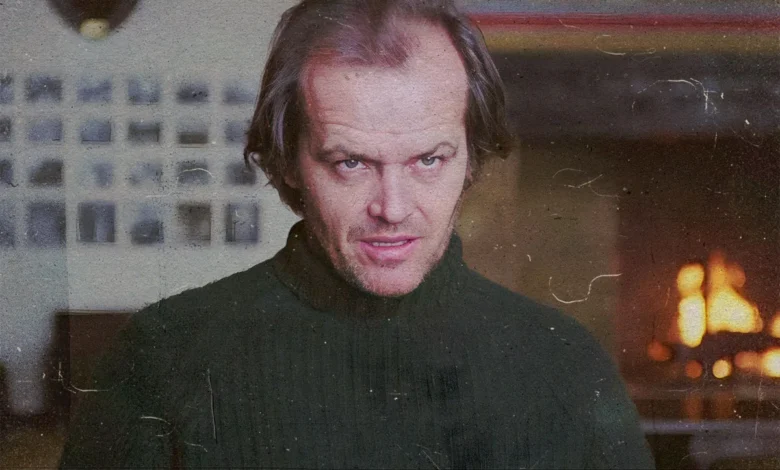Kubrick Stare: Analyzing the Iconic Cinematic Technique

The “Kubrick Stare” is a visual trademark in the world of cinema, associated with the legendary director Stanley Kubrick. This distinctive expression, characterized by a character tilting their head slightly downward and staring intensely upward from beneath their brow, encapsulates a sense of eerie intensity and psychological depth. It’s more than just a look; it’s a narrative device that conveys complex emotions and themes. In this article, we’ll delve into the various facets of the Kubrick Stare, from its psychological impact to its significance in Kubrick’s films, and why it continues to captivate audiences and filmmakers alike.
Kubrick Stare: What Makes This Film Expression So Chilling?
The Kubrick Stare is unsettling for several reasons. Firstly, it breaks the conventional norms of facial expressions in film. Unlike typical expressions of anger, fear, or madness, the Kubrick Stare is ambiguous and multifaceted. This ambiguity forces viewers to project their own interpretations onto the character, making the stare a canvas for personal fears and anxieties.
Secondly, the stare often precedes or accompanies moments of high tension or violence in Kubrick’s films. This association with impending doom amplifies its chilling effect. For instance, in “The Shining,” Jack Torrance’s Kubrick Stare becomes a precursor to his descent into madness and violence. This use of the stare as a narrative foreshadowing tool heightens the psychological tension.
Lastly, the framing and cinematography play crucial roles. Kubrick’s meticulous attention to detail ensures that the stare is always perfectly lit and framed, enhancing its eerie quality. The use of symmetrical shots and the character’s direct gaze into the camera can make the audience feel complicit in the character’s derangement, adding to the unsettling atmosphere.
Kubrick Stare: Exploring the Psychological Impact in Film
The psychological impact of the Kubrick Stare is profound. It serves as a window into the character’s inner turmoil and psychological state. When a character employs the Kubrick Stare, it signifies a moment of critical emotional or mental breakdown, a departure from sanity that is both intriguing and horrifying.
Psychologically, the stare evokes a primal response from viewers. Eye contact is a powerful form of communication; a direct, unblinking stare can signal dominance, threat, or deep emotional disturbance. The Kubrick Stare capitalizes on this by placing viewers in an uncomfortable position where they must confront the character’s unfiltered psyche.
Moreover, the Kubrick Stare often challenges the viewer’s moral and emotional boundaries. It invites viewers to empathize with characters who may be experiencing extreme states of mind, thereby blurring the line between right and wrong, sanity and insanity. This moral ambiguity is a hallmark of Kubrick’s storytelling, compelling viewers to question their own perceptions and biases.
Kubrick Stare: The Story Behind Stanley Kubrick’s Signature Shot
Stanley Kubrick’s journey to the Kubrick Stare began with his fascination with human psychology and his meticulous approach to filmmaking. Kubrick, known for his perfectionism, believed in the power of visual storytelling. His background in photography influenced his cinematic style, leading him to experiment with composition, lighting, and facial expressions.
The Kubrick Stare made its first notable appearance in “2001: A Space Odyssey” with the character HAL 9000. Although HAL is a computer, its unblinking red eye, framed in a symmetrical shot, conveys an unsettling intelligence and menace. This use of a non-human character to introduce the stare underscores Kubrick’s innovative approach to visual symbolism.
As Kubrick’s career progressed, the stare became more prominent and refined. In “A Clockwork Orange,” Alex DeLarge’s menacing gaze became an iconic representation of delinquency and sociopathy. Kubrick’s decision to focus on the eyes as a narrative tool was a deliberate choice to communicate the character’s internal world without relying on dialogue.
Kubrick Stare: A Deep Dive into Kubrick’s Filmmaking Genius
Kubrick’s genius lies in his ability to blend technical mastery with profound thematic depth. The Kubrick Stare is a testament to this blend, serving as both a technical feat and a thematic cornerstone. Kubrick’s films often explore themes of dehumanization, existential dread, and the darker aspects of human nature. The stare encapsulates these themes in a single, potent visual motif.
Technically, Kubrick’s use of the stare involves precise camera work and lighting. The close-up shot, often framed symmetrically, forces the audience to focus entirely on the character’s face, creating an intimate and intense viewing experience. The lighting is meticulously crafted to highlight the eyes, making them the focal point of the shot. This technical precision ensures that the emotional and psychological impact of the stare is maximized.
Kubrick’s insistence on multiple takes, sometimes numbering in the hundreds, allowed him to capture the exact expression he envisioned. This perfectionism, often challenging for actors, resulted in performances that were both authentic and unsettling. The Kubrick Stare, therefore, is not just an expression but a culmination of Kubrick’s relentless pursuit of cinematic excellence.
Kubrick Stare: Understanding the Art of Cinematic Tension
Creating cinematic tension is an art, and the Kubrick Stare is one of its most effective tools. Tension in film is built through a combination of narrative, performance, and visual elements. The Kubrick Stare, with its intense focus and psychological depth, amplifies this tension by creating an immediate and visceral connection with the audience.
Narratively, the stare often occurs at pivotal moments in the story, heightening the stakes and foreshadowing significant events. In “The Shining,” Jack Torrance’s stare is a harbinger of his complete psychological breakdown. The audience, aware of the character’s unstable state, anticipates the impending chaos, creating a sense of dread and suspense.
Visually, the stare is framed to maximize discomfort. The close-up shot, combined with the character’s intense gaze, invades the viewer’s personal space, creating a feeling of unease. The use of symmetry and precise lighting further enhances this effect, making the stare an unforgettable cinematic moment.
Kubrick Stare: Unveiling the Mastery of Stanley Kubrick
Stanley Kubrick’s mastery of filmmaking is evident in his use of the Kubrick Stare. This iconic expression is a testament to his understanding of human psychology, his technical prowess, and his ability to convey complex themes through visual storytelling. Kubrick’s films are a blend of artistic vision and meticulous craftsmanship, and the Kubrick Stare is a prime example of this blend.
Kubrick’s dedication to his craft extended beyond the camera. He worked closely with actors to elicit the precise emotional response required for the stare. This collaboration often involved intense and sometimes grueling sessions, but the results were performances that left a lasting impact on audiences.
The Kubrick Stare is not just a cinematic technique; it is a reflection of Kubrick’s unique approach to filmmaking. His ability to create moments of intense psychological and emotional resonance through a single expression speaks to his genius as a director. The stare is a visual representation of Kubrick’s belief in the power of cinema to explore the deepest aspects of the human condition.
Kubrick Stare: Why It’s a Hallmark of Cinematic Brilliance
The Kubrick Stare has become a hallmark of cinematic brilliance because it encapsulates the essence of Stanley Kubrick’s filmmaking philosophy. It is a symbol of his ability to convey complex emotions and themes through visual storytelling. The stare is a powerful narrative tool that transcends language, relying on the universal language of facial expression to communicate with the audience.
The brilliance of the Kubrick Stare lies in its simplicity and effectiveness. It requires no dialogue, no elaborate set-up, just a character’s face and a carefully crafted shot. This simplicity, combined with the emotional and psychological depth it conveys, makes the stare a unique and enduring cinematic technique.
Kubrick’s influence on cinema is vast, and the Kubrick Stare is one of the many ways his legacy continues to shape filmmaking. Directors and actors study Kubrick’s films to understand the intricacies of creating powerful visual moments. The stare serves as a benchmark for cinematic excellence, a reminder of the potential of film to evoke deep emotional responses.
Kubrick Stare: Decoding the Powerful Visual Symbolism
The Kubrick Stare is rich in visual symbolism. It is a representation of inner conflict, psychological disturbance, and often, a detachment from reality. The downward tilt of the head and upward gaze create a sense of unnatural intensity, signaling to the audience that the character is experiencing something beyond the ordinary.
Symbolically, the stare can be interpreted in various ways depending on the context of the film. In “A Clockwork Orange,” Alex’s stare symbolizes his inherent violence and lack of empathy. In “The Shining,” Jack’s stare represents his descent into madness and the overpowering influence of the Overlook Hotel. Each instance of the stare carries a unique symbolic weight, tailored to the narrative and character.
The stare also serves as a visual motif that ties Kubrick’s films together. It creates a sense of continuity and thematic coherence across his body of work. By recurring in different contexts, the stare becomes a signature of Kubrick’s storytelling, a visual shorthand for the psychological depth and complexity he brings to his films.
Kubrick Stare: A Comprehensive Guide for Film Enthusiasts
For film enthusiasts, understanding the Kubrick Stare is essential to appreciating the full scope of Stanley Kubrick’s work. It is a key element of his visual language and a testament to his ability to create powerful, memorable cinematic moments. Here are a few tips for appreciating and analyzing the Kubrick Stare:





